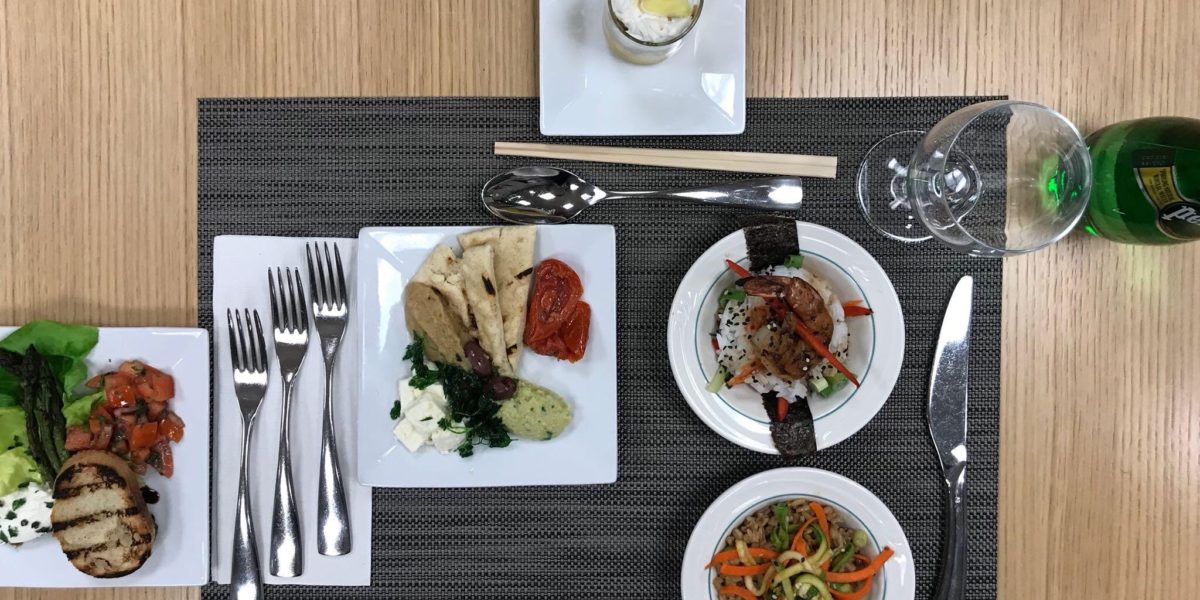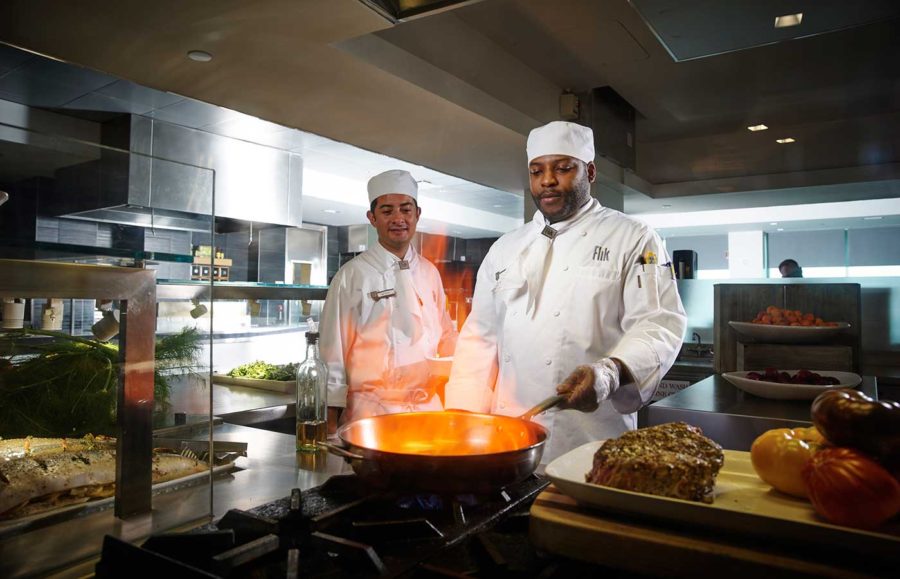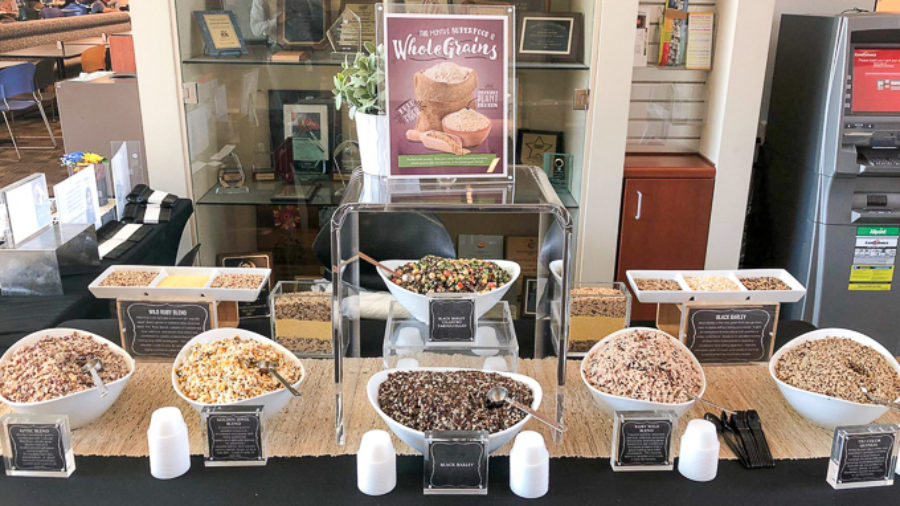
Beyond mystery meat
By John Andrews
Gone are the days when hungry residents were herded into the cafeteria for their helpings of humdrum fare that tasted ordinary and left no pleasant memory of the dining experience. The senior living industry has become enlightened about the potential for mealtime to be something that residents remember — for the right reasons.
Residents have become greatly empowered in communities' quest to provide a food service component that excels in menu diversity, appearance, taste and dining atmosphere. Meals have not only become more nutritionally sound, they have added a stylistic panache that turns every visit to the dining room into a pleasant and memorable social experience, food service experts say.
To be sure, meal service has gone beyond just satisfying residents' appetites and plays a vital role in keeping them content and comfortable, says Ray Costello, founder and CEO of bmrbnb.
“Meal service is huge – it provides some of the most meaningful daily resident interactions with each other and staff,” he says.
The days of cafeteria-style take-it-or-leave-it selections “have reached the end of their cycle,” Costello notes, and it is being replaced by several more palatable options, including restaurant-style dining, short-order diner style, buffet style and pub-style finger food.
“This is the future, and if you're not doing it, you cannot compete in the senior living marketplace,” he says.
Of all the formats beyond the conventional cafeteria style, restaurant-style dining is becoming “a very common trend” within the senior living industry, says Shellee Roloff, category manager for food service at Direct Supply.
“We see many variations and different levels of service under the term ‘restaurant-style dining,'” she says. “A great start is to offer two main menu items along with the simple ‘always available' items, such as soup, sandwiches and salads.”
Another version of restaurant-style is “tableside service,” furnished with either a mini buffet cart that moves from table to table or a small buffet cart that remains in one area of the dining room. Orders are taken at the table and the meal is plated and brought to the resident. Roloff calls this format “a hybrid style of service between restaurant style and buffet style.”

BUFFET AND BISTRO
Buffet-style is popular with residents and is gaining in sophistication. For instance, more communities are offering a breakfast buffet with expanded hours to incorporate more choice for residents, Roloff says.
“This enhanced breakfast service typically results in more residents in your dining room versus tray service in the rooms,” she says. “Lunch and dinner buffets can be a great style of service to offer choice and get aromas into the dining room. However, even buffets can feel like the same old thing after a while, so it's important to keep it fresh by incorporating buffets into the other various dining styles.”
Buffets are especially effective when held in conjunction with special events such as holidays, or a weekly prime rib night, Costello says.
“Food costs are too high to make this an everyday thing,” he says. “If your community rolls out and markets specialty nights correctly, they will play a big role in resident satisfaction and excitement about the dining program.”
Pub-style and day-to-night bistros are gaining in popularity at senior living communities and offer residents nourishment in the off hours between mealtimes, Roloff says.
“The bistro will serve coffee, pastries and simple breakfast items in the morning and then convert to a happy hour theme in the afternoon,” she says. “Existing buildings with limited space will incorporate small mobile counters that can service a similar purpose. If possible, it's helpful to locate these stations near the reception desk for operational efficiency.”
Several equipment options, such as speed ovens, which are typically vent less and can cook anything from open-faced sandwiches to French fries and pizzas can help support made-to-order bar bites, Roloff says. If point-of-service cooking is not an option, she says heated and refrigerated merchandisers can hold and display items that are made in the back-of-house kitchen.

INTO THE KITCHEN
Getting residents into the kitchen for meal preparation is an activity that “neighborhood” and “household” communities are doing, using the more intimate surroundings to create the kind of home-cooked meals those residents remember. The concept is trickier for the larger senior living communities, however, and is usually limited due to concerns about resident safety and cross-contamination.
Visible, open kitchens where residents can watch meal preparation are becoming more common in the larger communities and they are serving as an attraction that creates an engaging experience for residents, Roloff says.
“At the high end, we see exhibition kitchens featuring hands-on cooking lessons and demonstrations — even if a community isn't able to create a robust exhibition kitchen, a similar concept can be created on a smaller scale with action stations,” she says.
TALK TO THE CHEF
With baby boomers now starting to influence senior living communities, they are looking for more upscale elements of food service, including chef-prepared dishes that would be included on a fine dining establishment's menu.
In fact, more chefs are being employed by senior living communities and are proudly applying their expertise to residents' meal service. Companies such as FLIK Lifestyles have focused on escalating food options for senior residents and are getting very creative in their menu choices, says Lisa Harkins, director of clinical and wellness support.
“We need to address the demand for ‘meat and potatoes' while balancing the demands from the boomer generation, which is more interested in healthier items like smoothies, hummus, grains and greens,” she says. “It also doesn't hurt that boomers' children have a strong influence on their parents' choices and are very vocal in requesting more healthy menu options.”
To keep abreast of the boomers' and their kids' tastes, FLIK is consistently updating its menu offerings to introduce more residents to healthier foods such as ancient grains, including chia seeds and farro. Harkins and her team are also focused on incorporating new spices, herbs and flavors into their menus by serving globally influenced dishes such as Indian dosa, Korean bulgogi, South American arepas, Hawaiian poke bowls and Chinese jian bings.
“We are also incorporating a wider variety of alternative proteins, like tofu into vegetarian dishes, and including more menu items that push vegetables to the forefront of dishes, allowing them to serve as the star of the plate,” Harkins says.
Food programs run by FLIK chefs such as Adam Grafton are committed to providing a “wow” factor for residents through a concept he calls Plate Palette. “This offering incorporates an artistic element to our meals, redefining natural ingredients into a new form or shape that is both aesthetically pleasing and simultaneously delicious,” Grafton says.

MORE THAN FOOD
Meal service has become more than the food — it is an experience that residents should savor and remember every time. Senior living communities aiming to draw maximum occupancy rates understand this and are making dining a centerpiece to their business model.
“It isn't just about food service — it's about hospitality,” says Jack Silk, president of FLIK Lifestyles. “Our entire brand is built on the philosophy of creating strong, meaningful interpersonal relationships between our team and our residents. We pride ourselves on giving each employee the right tools and training required to provide quality service and achieve the highest levels of customers satisfaction. This training emphasizes relationships built on respect, warmth and understanding. We build customer loyalty, and that is the foundation for providing a meaningful experience for every resident.”
*This article first appeared in McKnight's Senior Living on April 1, 2018.